Home ➜ Projects ➜ Electronic Devices
Introduction:
Screens are part of our life for more than 9 decades. It started in a form of a monochrome television back in 1927. Later in seventies, introduction of desktop Personal Computer gave rise to use of screens in a different form. Screens evolved from bulky Cathode-Ray Tube (CRT) to portable Liquid Crystal Display (LCD) which paved way for portable devices like laptops and mobile phones. People were no longer restricted to using screens only at one place, but they could see them on the go. Tremendous growth in wireless data speeds further fuelled the use of these mobile devices beyond imagination. Specifically, during 2020 the lockdown due to COVID-19 forced people using screens even further like digital meetings, online education etc.
Screens have become integral part of our lives. While they make our life convenient, they also bring lot of issues with them. More time we spend on screens, less time we get for physical activities which impacts our health. Most importantly according to various research work, they impact our vision. This project explores the effect of electronic devices (specifically the screens) on our eyes.
References:
Effects of electronic devices on eyes and vision have been studied for a long time. Especially in last two decades with exponential growth in adaptation of information technology, a lot of research work has been carried out by various institutes and independent researchers.
Computer vision syndrome (CVS) is characterised by a range of eye and vision-related symptoms and has been a recognised health problem for over 20 years. The terms Visual Fatigue (VF) and Digital Eye Strain (DES) are also used for the condition, reflecting the variety of digital devices linked to potential problems.[A]
[A] – Digital eye strain: prevalence, measurement and amelioration by Amy L Sheppard, James S Wolffsohn, 2018
American Optometric Association (AOA) describes CVS as “group of eye-and-vision related problems that result from prolonged computer, tablet, e-reader and cell phone use”. This article says many individuals experience eye discomfort and vision problems when viewing digital screens for extended periods. The level of discomfort appears to increase with the amount of digital screen use. It further states that an average American worker spends seven hours a day on the computer either in the office or working from home.
The main ocular symptoms reported by workers are eye strain, irritation, burning sensation, redness, blurred vision, and double vision. These symptoms are usually temporary and disappear at the end of the working day even though a minority of worker may experience continuity of symptoms after work. If no intervention is initiated, most of these symptoms will recur and may worsen in the future.
CVS Pathway: [B]
The symptoms experienced in Computer Vision Syndrome are caused by three potential mechanisms:
- Extra-ocular mechanism – symptoms impacting part of body other than eye or vision.
- Accommodative mechanism – symptoms impacting accommodative mechanism of eye. Accommodation is the process of changing the shape of the lens to focus on near or distant objects.
- Ocular surface mechanism – symptoms impacting surface of eyes.
References:
Effects of electronic devices on eyes and vision have been studied for a long time. Especially in last two decades with exponential growth in adaptation of information technology, a lot of research work has been carried out by various institutes and independent researchers.
Computer vision syndrome (CVS) is characterised by a range of eye and vision-related symptoms and has been a recognised health problem for over 20 years. The terms Visual Fatigue (VF) and Digital Eye Strain (DES) are also used for the condition, reflecting the variety of digital devices linked to potential problems.[A]
[A] – Digital eye strain: prevalence, measurement and amelioration by Amy L Sheppard, James S Wolffsohn, 2018
American Optometric Association (AOA) describes CVS as “group of eye-and-vision related problems that result from prolonged computer, tablet, e-reader and cell phone use”. This article says many individuals experience eye discomfort and vision problems when viewing digital screens for extended periods. The level of discomfort appears to increase with the amount of digital screen use. It further states that an average American worker spends seven hours a day on the computer either in the office or working from home.
The main ocular symptoms reported by workers are eye strain, irritation, burning sensation, redness, blurred vision, and double vision. These symptoms are usually temporary and disappear at the end of the working day even though a minority of worker may experience continuity of symptoms after work. If no intervention is initiated, most of these symptoms will recur and may worsen in the future.
CVS Pathway: [B]
The symptoms experienced in Computer Vision Syndrome are caused by three potential mechanisms:
- Extra-ocular mechanism – symptoms impacting part of body other than eye or vision.
- Accommodative mechanism – symptoms impacting accommodative mechanism of eye. Accommodation is the process of changing the shape of the lens to focus on near or distant objects.
- Ocular surface mechanism – symptoms impacting surface of eyes.
References:
Effects of electronic devices on eyes and vision have been studied for a long time. Especially in last two decades with exponential growth in adaptation of information technology, a lot of research work has been carried out by various institutes and independent researchers.
Computer vision syndrome (CVS) is characterised by a range of eye and vision-related symptoms and has been a recognised health problem for over 20 years. The terms Visual Fatigue (VF) and Digital Eye Strain (DES) are also used for the condition, reflecting the variety of digital devices linked to potential problems.[A]
[A] – Digital eye strain: prevalence, measurement and amelioration by Amy L Sheppard, James S Wolffsohn, 2018
American Optometric Association (AOA) describes CVS as “group of eye-and-vision related problems that result from prolonged computer, tablet, e-reader and cell phone use”. This article says many individuals experience eye discomfort and vision problems when viewing digital screens for extended periods. The level of discomfort appears to increase with the amount of digital screen use. It further states that an average American worker spends seven hours a day on the computer either in the office or working from home.
The main ocular symptoms reported by workers are eye strain, irritation, burning sensation, redness, blurred vision, and double vision. These symptoms are usually temporary and disappear at the end of the working day even though a minority of worker may experience continuity of symptoms after work. If no intervention is initiated, most of these symptoms will recur and may worsen in the future.
CVS Pathway: [B]
The symptoms experienced in Computer Vision Syndrome are caused by three potential mechanisms:
- Extra-ocular mechanism – symptoms impacting part of body other than eye or vision.
- Accommodative mechanism – symptoms impacting accommodative mechanism of eye. Accommodation is the process of changing the shape of the lens to focus on near or distant objects.
- Ocular surface mechanism – symptoms impacting surface of eyes.
Table 1 below summarises various symptoms in each pathway:

Table 2 below summarises various factors contributing to computer vision syndrome:

[B] – Understanding and Preventing Computer Vision Syndrome by KY Lohcorresponding and SC Redd, 31-Dec-2008
Blue Light Emission:
Blue light, with wavelengths shorter than 440–450 nm, is the most energetic radiation of the visible spectrum. Anterior structures of the adult human eye are highly effective at blocking UV rays from reaching the light-sensitive retina at the back of the eyeball. On the other hand, virtually all visible blue light passes through the cornea and lens and reaches the retina. Sunlight remains main source of blue light but man-made low-energy devices such as such as compact fluorescent lamps (CFLs) and light emitting diodes (LEDs) also produce blue light. Modern flat screens extensively use low energy light sources such as light emitting diodes (LEDs) or organically modified light emitting diodes (AMOLEDs).
The fact that blue light penetrates all the way to the retina (the inner lining of the back of the eye) have raised concerns. Laboratory studies have shown that too much exposure to blue light can damage light-sensitive cells in the retina. This causes changes that resemble those of macular degeneration, which can lead to permanent vision loss. (Macula is small central area of retina that controls clarity of vision). More research is needed, though, to determine how much natural and man-made blue light is “too much blue light” for the retina.
Blue Light and Digital Eye Strain (DES):
Because short-wavelength, high energy blue light scatters more easily than other visible light, it is not as easily focused. When we look at computer screens and other digital devices that emit significant amounts of blue light, this unfocused visual “noise” reduces contrast and can contribute to Digital Eye Strain (DES).
Research has shown that lenses that block blue light with wavelengths less than 450 nm (blue-violet light) increase contrast significantly. Therefore, computer glasses with yellow-tinted lenses may increase comfort when you’re viewing digital devices for extended periods of time.
[C] – Blue light: How it’s both bad and good for your eyes – All About Vision, Nov, 2017
Hypothesis:
While effects of screens on eyes and vision have been researched in detail, there is no evidence of mass awareness of the issue. This is evident from the fact that use of screens is increasing day-by-day but no real effort has been undertaken by the device manufacturers to lower the side effects. Few options such as blue light filters on mobile devices or protective eyewear etc. are available but they are not much popular.
A hypothesis is thus formed that – “Continuous use of electronic devices may be causing effect that is mild or insignificant enough for the people to ignore or worry for substantial or long-term damage”.
Rationale:
Majority of working adults spend around 8 hours a day in office. A large portion of this time is spent in front of a computer (laptop or desktop).
Lockdown situation in 2020 forced many people including students using online meetings, attending online classes thereby increasing the exposure to the screens. Even the students now spend about 4 to 5 hours in front of screens.
In addition to above use nearly everyone uses mobile phones, televisions, tablets etc. throughout the day till they sleep. This signifies that people in all age-groups spend a major portion of their time using the electronic devices (screens)
Despite above situation few people seem to be worrying or complaining about the eye problems and even fewer link it to excessive use of these devices. In fact, majority see the increasing use of electronic devices as “normal”, “unavoidable” or “part-of-life”.
Materials / Software Used:
- Google Forms was used to make online questionnaire and take feedback from respondents.
- Microsoft Excel was used to store the data, statistical analysis and making charts.
- Microsoft Word was used to make the research paper.
- Microsoft PowerPoint was used to make project presentation.
Data Collection and Research Process:
Since the aim of this project is to understand the effects of electronic devices (screens) on eyes through the experiences of real-life users, it was decided to administer a questionnaire through online survey.
Questionnaire:
Survey questions were carefully drafted to cover following points:
- Demographic data (name, age, sex)
- Types of devices used.
- Primary purpose of use, how much time and when used?
- What symptoms are seen and when?
Two specific questions were asked to understand how long they have been using these devices and if in their opinion such use has caused worsening of eyesight.
Administration of questionnaire:
The questionnaire was administered to a diverse population comprising of all age groups from 10 to 80 years. The target audience covered students, working adults and homemakers. No specific attempt could be made to achieve balance in male-female ratio.
Data Processing and Analysis:
The collected data was downloaded in excel spreadsheet and cleaned for duplication. Timestamp, name and age was used to identify duplicates. In two questions viz. number of hours used and since how many years they are using electronic devices, non-numerical data was converted into numbers. In case of range given for example 4 to 5 hours, the larger number was taken (5 hours). In case of years with lower limit for example “more than 12 years”, the threshold number (12) was taken. This was done to enable statistical analysis on the data.
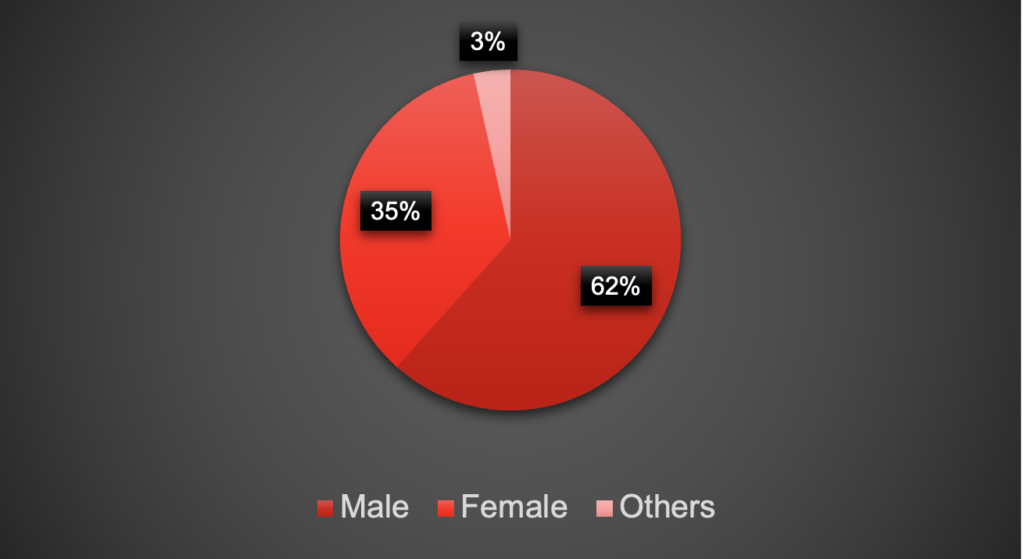
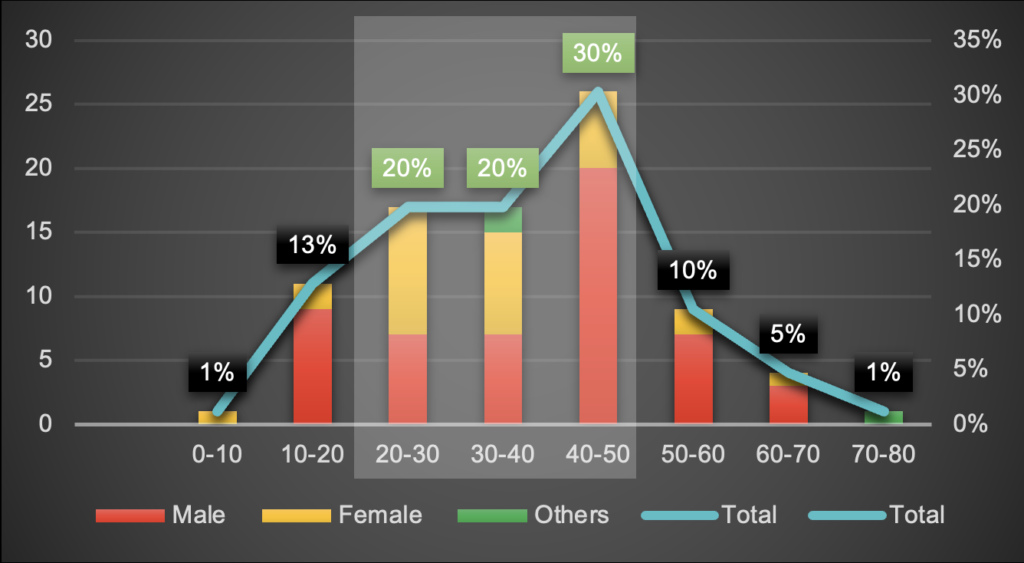
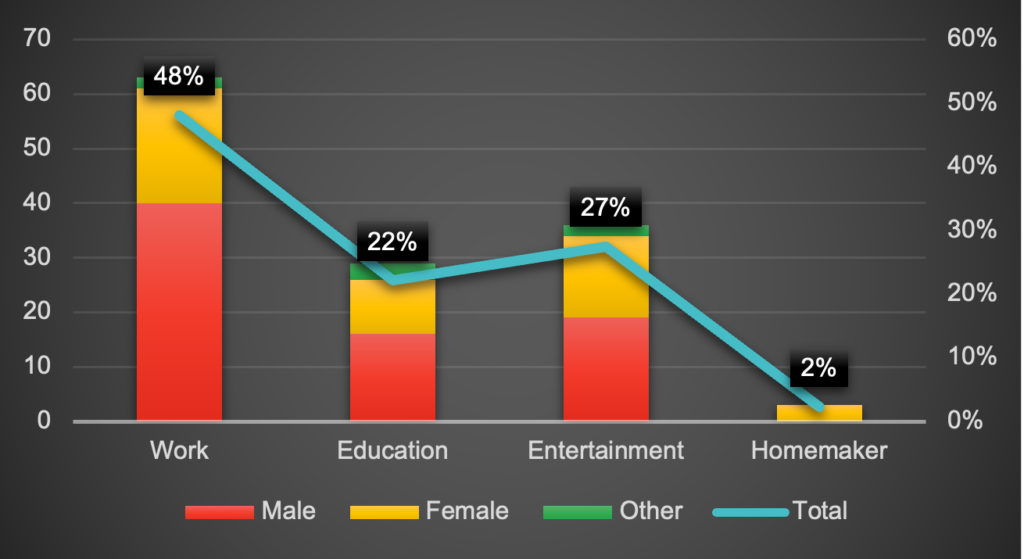
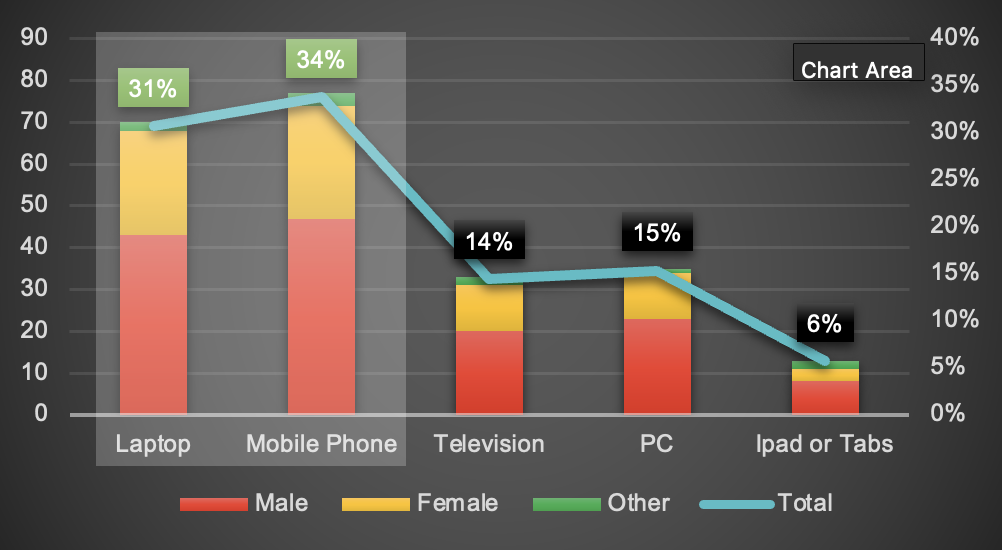
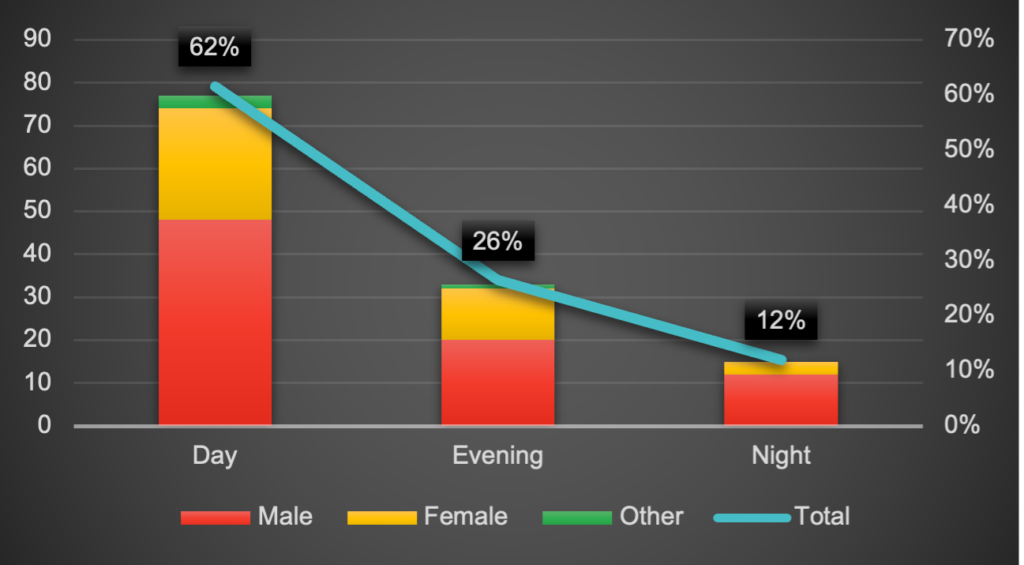

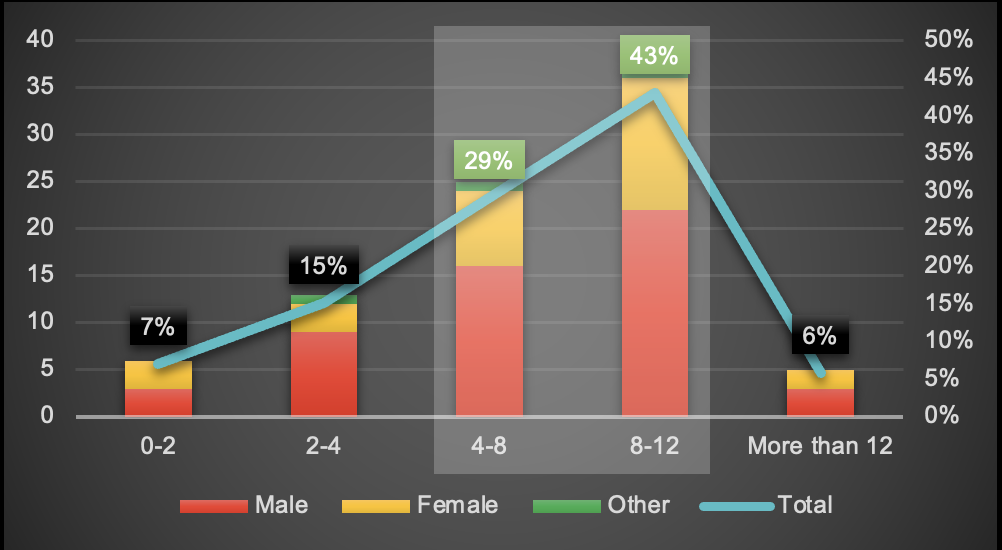
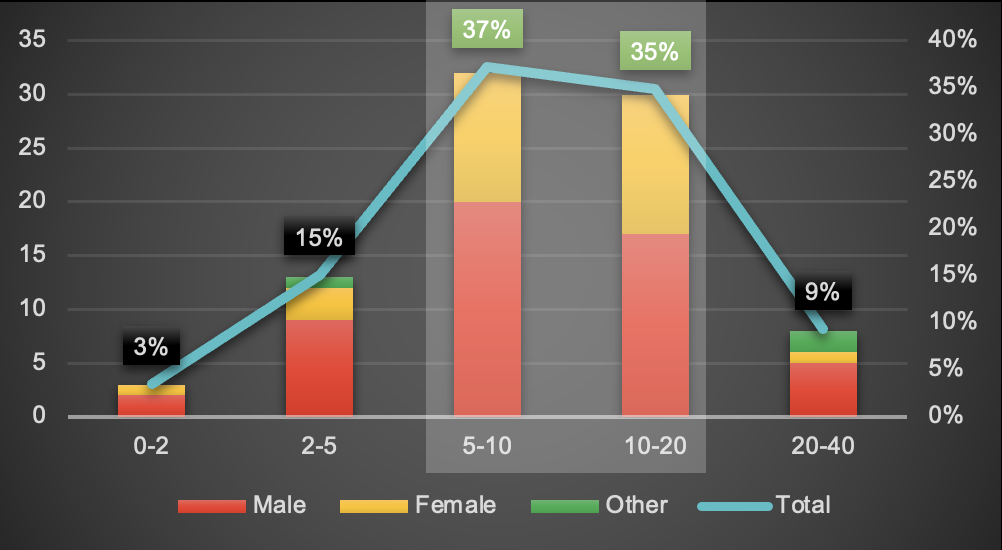
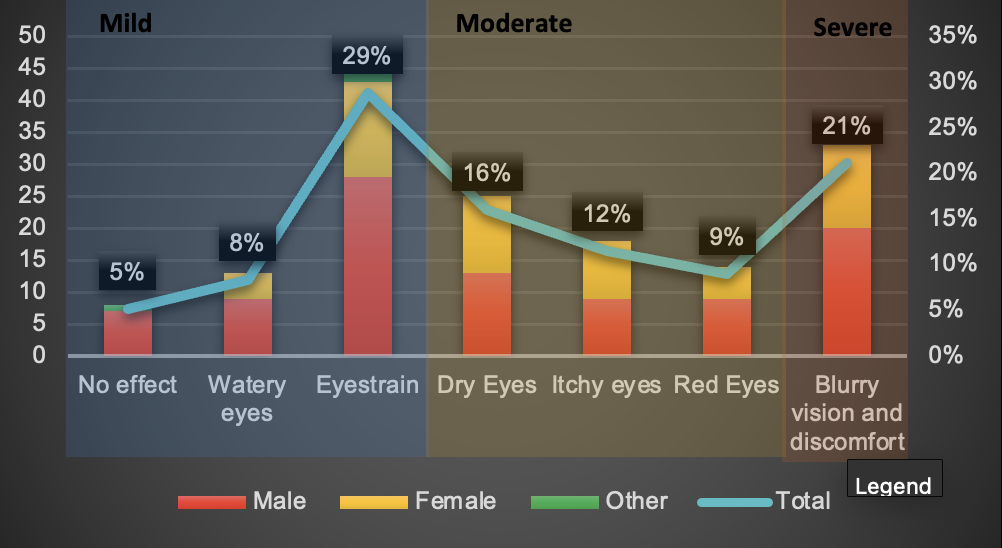
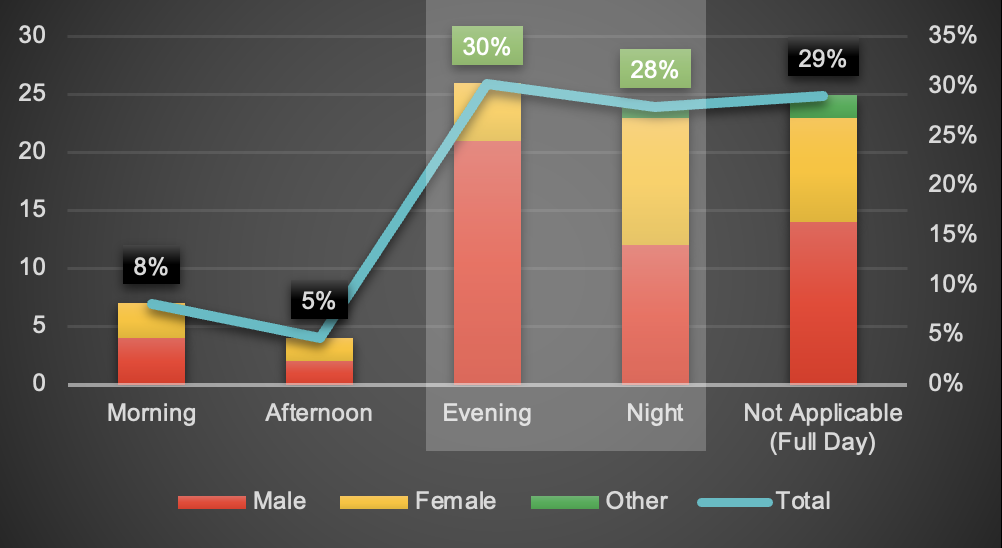
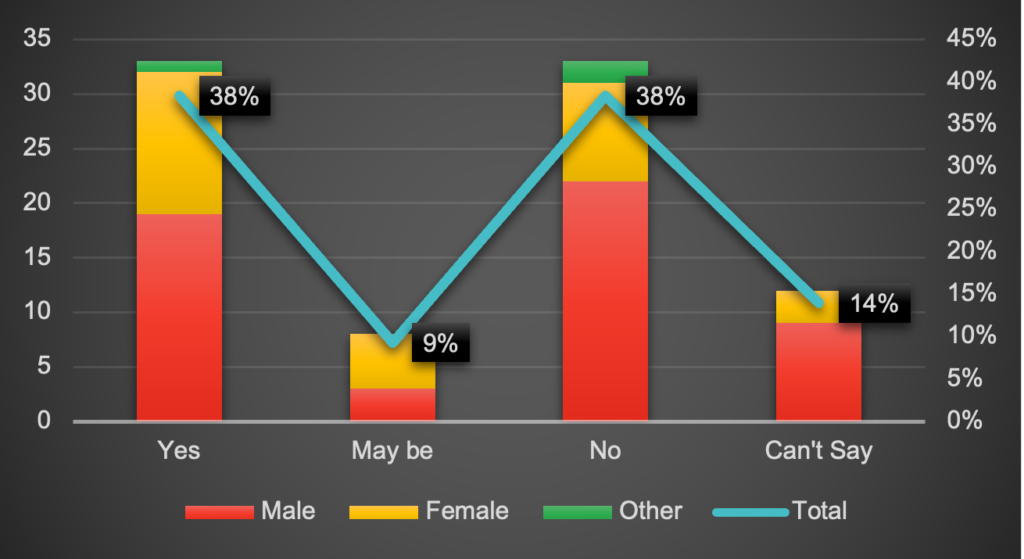
Conclusion:
Majority (70%) of the respondents represented adult working people. They are primarily using the devices for work and education.
Majority (80%) of the devices used are laptops, mobile phones and PC. It corelates perfectly with primary use of work and education.
Major use (62%) is during the day time. On average people spend 7.9 hours using these devices.
Most respondents (72%) have been using the devices for fairly long period between 5 to 20 years. It may suggest that impact of these devices on eyes is a slow process.
Majority (79%) reported mild to moderate CVS symptoms like eye strain, dry, itchy and red eyes despite using the devices for fairly long period.
Most respondents (58%) reported the problem during evening and night, thus corelating with long daily exposure.
Ironically despite reporting CVS symptoms, most respondents (61%) did not clearly corelate it with exposure to screens thus showing lower awareness in the group. It may also be due to the fact that very few people noticed severe symptoms like blurry vision, headaches etc.